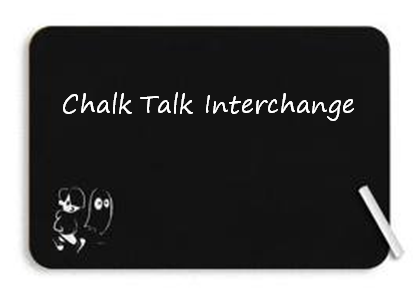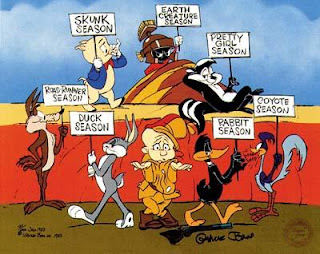Teaching is more than standing in front of a group of students, it is more than showing up and implementing lesson plans, teaching is engaging and immersing ones self in all aspects of the world of education.
Within the world of education there are four areas that encompass the philosophies of teaching: 1) Planning and Preparation, 2) Instruction, 3) Classroom environment, and 4) Professional Responsibilities (Alvarez & Anderson, 2011, p. 61). These four areas evolve and revolve around many of the best practices I look forward to striving for and arriving at but here is my top 5!
* Understanding Development Pathways and Progressiveness
* Motivation
* Including Students in the Process of Teaching and Learning
* Good Communication Skills
* A Good Sense of Humor
 Understanding development Pathways and Progressiveness – no two students are alike, regardless of how close in age they may be. Just because students are grouped together in a grade, does not mean they are at the same place in development, skills, and ability (Henninger, 2009, as cited in Santrock, 2009, p. 7). Self Evaluation: Am I treating each student as the individual they are and not expecting them to fit into someone else’s box? Do my lessons and interaction reflect my understanding of development and progression? (Planning & Preparation)
Understanding development Pathways and Progressiveness – no two students are alike, regardless of how close in age they may be. Just because students are grouped together in a grade, does not mean they are at the same place in development, skills, and ability (Henninger, 2009, as cited in Santrock, 2009, p. 7). Self Evaluation: Am I treating each student as the individual they are and not expecting them to fit into someone else’s box? Do my lessons and interaction reflect my understanding of development and progression? (Planning & Preparation) · Motivation - To maintain an instruction that is both interesting and interactive, a teacher must remain motivated to be an effective teacher. Bad attitudes are contagious, and it stands to reason a good attitude can be just as contagious. Being motivated to provide instruction that moves the students to think deeper and helps move them toward self motivation is the ultimate goal in instruction. Self evaluation, I need to be asking myself; Am I motivated and is that motivation reflective through my lessons and instruction? Am I seeing my students begin to self motivate? (Instruction)
· Motivation - To maintain an instruction that is both interesting and interactive, a teacher must remain motivated to be an effective teacher. Bad attitudes are contagious, and it stands to reason a good attitude can be just as contagious. Being motivated to provide instruction that moves the students to think deeper and helps move them toward self motivation is the ultimate goal in instruction. Self evaluation, I need to be asking myself; Am I motivated and is that motivation reflective through my lessons and instruction? Am I seeing my students begin to self motivate? (Instruction)· Including Students in the Process of Teaching and Learning – If the goal of the classroom is to work together toward a common goal, regardless of what that goal may be, then it is very important that all participants have some say in how that goal will be met. Including students can be as simple as asking for their input about a lesson or homework assignment. It can mean brainstorming with the students about classroom rules that are important. Letting students have input about lessons and the classroom helps them take some responsibility for their classroom and empowers them to take that responsibility. Self evaluation: How I have I empowered my students? Have I asked for their input? (Classroom environment).
Good Communication Skills – Knowing how to communicate is something that evolves on a regular basis and is often accomplished through trial and error. Conflicts in communication can teach valuable lessons. Positive communication experiences leave an impression that one wants to repeat. Good communication also involves nonverbal cues. How a teacher interacts both verbally and nonverbally with the students can affect the message of instruction. Good communication involves actively listening to those who are speaking to us. All areas of good communication can affect the ability to be an effective teacher. Self evaluation: Videotaping while in the classroom offers the chance to observe both my verbal and nonverbal communication. What messages am I sending to my students in both areas of communication? (Professional Responsibilities)
· A Good Sense of Humor - Let’s face it, life is never what we expect and there are things that happen that we cannot control. When all else fails, laughter is the best medicine. Being able to laugh at my own mishaps allows my students to know mistakes happen, we learn from them, perhaps laugh at them, and move on. Humor allows for fun and learning should be fun. Often times learning takes place without even being aware that we have learned something. I believe that teachable moments often arise from humorous moments. Self evaluation: Am I taking the stress of my profession too seriously? When was the last time I had fun and added a little humor to my classroom activities? (Professional Responsibilities)
Sources:
Alvarez, M., & Anderson-Ketchmark, C.. (2011). Danielson's Framework for Teaching. Children & Schools, 33(1), 61-63. Retrieved February 23, 2011, from ProQuest Nursing & Allied Health Source. (Document ID: 2242536331).
Santrock, J., (2009) Educational psychology. 4th ed. Boston: McGraw-Hill Primis Custom Publishing








